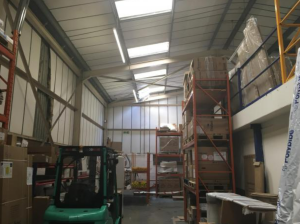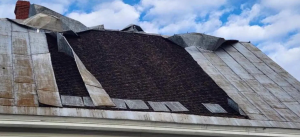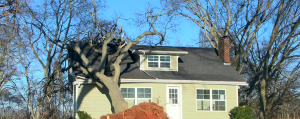
By Margot Miller
According to the National Audit Office’s (NAO) report, there are 700,000 English schools that require major repairs or reconstruction.
Unbelievable 38 percent of all school buildings are older than expected. Many of the buildings, built cheaply using RAAC over a period of three decades starting in 1950, may collapse without warning. Nearly 600 of these buildings need immediate structural inspections. The Conservative Party and Education Unions have known for a long time that dilapidated building pose a danger to students and teachers. Repairs are moving very slowly, but parts of the roofs already have given way.
The Department for Education, following the discovery of structural problems in five schools during the period October 2020 to March 2022, raised the likelihood of a building collapsing from “critically likely” (very unlikely) to “critically-likely”.
St Anne’s, Fearnville Primary, in Bradford (where a teacher had to be hospitalized due to a ceiling tile falling on him), and Fortis Academy, in Birmingham, were all closed as part of a major rebuild.
The cladding of Dore Primary in Sheffield fell and injured a parent. She was hit in the head by a 12-15 foot long fascia board that had 4-inch nails. A parent was required to undergo an MRI and take three weeks of leave.
On June 16, the Institute of Structural Engineers issued a warning about concrete roofs in four Kent schools. In June, RAAC ceilings were also discovered at Mistley Norman Church of England in Essex and Hockley Primary School in North East.
The roof of Singlewell Primary in Gravesend partially collapsed as far back at 2018. Fortunately, no one was injured. The roof’s stress signs were evident just 24 hours prior to the accident. This is a cause for concern. The Standing Committee on Structural Safety, in response to this possible tragedy, issued a warning on “failure RAAC planks” and recommended that any that had been installed prior 1980 be replaced.
RAAC, a cheaper alternative to concrete is used in schools for floors, walls and roofs. Prof. Chris Goodier is an expert on building materials and claims that RAAC is a lightweight aerated cement, without any large particles. His description of its structural behavior and characteristics is contrary to that of reinforced concrete. RAAC loses its strength and is full of air pockets when it is wet. Regular concrete, on the other hand, is stronger.
In 1982, the BRE Research group declared RAAC to be no longer viable after 30 years of production. This was due to safety concerns. The material was used by hospitals and public buildings throughout the UK. It is also still being used in China and central Asia.
Goodier, the leader of a large research project sponsored by NHS, says that RAAC is a suitable construction material if it’s designed, produced, installed, and maintained properly. Our research shows that this was not always the case for RAAC built between 1950-1970. DfE does not keep records of which schools have RAAC panelled walls.
In response to a safety incident at a school in 2018, the National Audit Office has reported that the Department for Education is considering the use of reinforced autoclaved aerated cement (RAAC), a lightweight concrete which can be prone to failure.
DfE is trying to transfer responsibility to schools through the distribution of warning notes, expanding its data collection program and releasing a guide to help identify RAAC. In March 2022, schools were sent a survey asking if RAACs existed in the building. Visual inspections to find RAAC are conducted, but more expensive and time-consuming structural inspections will provide a better result. These inspections may be disruptive.
Five years after the first safety incident, the report shows that the remedial work has largely remained at an assessment phase. The Department for Education made progress over the past year but lacks a comprehensive picture of the potential dangers in schools.
Only 42 percent (14900) of the 14900 schools constructed between 1930 and 2023 had RAAC identified in their building. The DfE committed to funding remedial works in schools that are directly threatened by RAAC. DfE identified 572 school as RAAC with 24 requiring urgent action.
DfE also considers that the risk of safety in schools is a very serious one. However, the NAO concluded there were insufficient funds to deal with structural problems which exacerbated the risk. For schools to be maintained and the riskiest cases of failures reduced, PS5.3 billion per year is needed. However, between 2016-17-2022-23, only PS2.3 was allocated.
Due to the austerity policies of successive governments, capital expenditures on school buildings have fallen by 50% in real terms. This has been true since 2010. Since 2010, the debt of the government has increased as a result of the corporate bailouts for the pandemic, and NATO proxy wars in Ukraine.
Reports have highlighted asbestos dangers in over 13,800 school buildings that were “system built”. Over a quarter of these are thought to be in an unsound condition. DfE only approved plans for 200 school blocks and failed to locate staff who had the necessary expertise. The National Education Union reports that 300 people have died of mesothelioma caused by asbestos exposure since 2001. Over the past 40 years, it is estimated that asbestos exposure in schools has caused 10,000 deaths among students and teachers.
This inquiry will be as ineffective as any other. The Whitehall departments have been instructed to designate one civil servant for the location of RAAC within public buildings.
Kevin Courtney is the joint general secretary for the NEU. He says, “If you want to stop something from occurring, like a collapse of a building, or finally deal with hidden asbestos killers in schools, then we must take action and provide significant funding.”
The situation, which was already disastrous, became even worse when the NEU and Johnson’s Administration collaborated to place staff and students in environments that were not safe during COVID outbreak. The irresponsible decisions made by the NEU and Johnson’s administration have destroyed many lives. Those who have contracted the virus are now suffering from ailments like lack of concentration and an increase in cases of type 1 diabetes. It is thought that this particular disease has a connection to immunity, and coronavirus can alter it.
The NEU, NASUWT and other unions wrote to Gillian Keegan, Education Secretary, in February to highlight the “horrible” condition of many schools, which could “cost lives”. They asked the government to take action to eliminate the danger of a building collapsing.
Unions will be unable to ensure school safety unless they appeal in vain to the government. They are trying to settle the dispute between teachers and the government over funding, work load and pay.
Schools will be death traps if the workers do not organize themselves into their own independent Rank and File Committees. Contact the Educators Rank-and-File Committee for more information.





